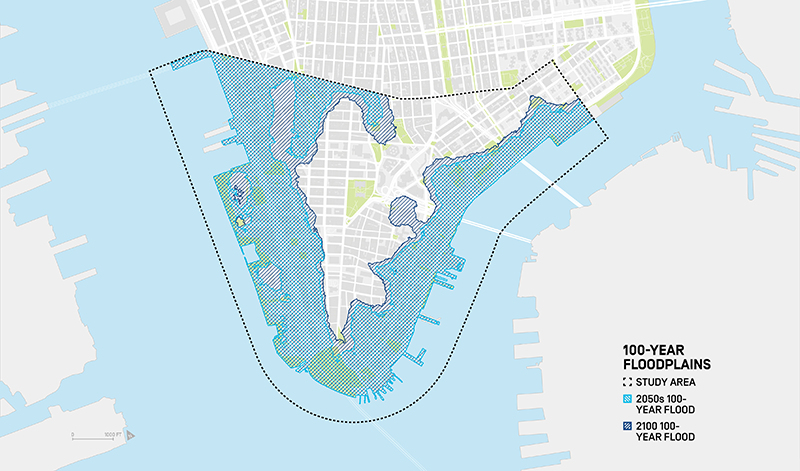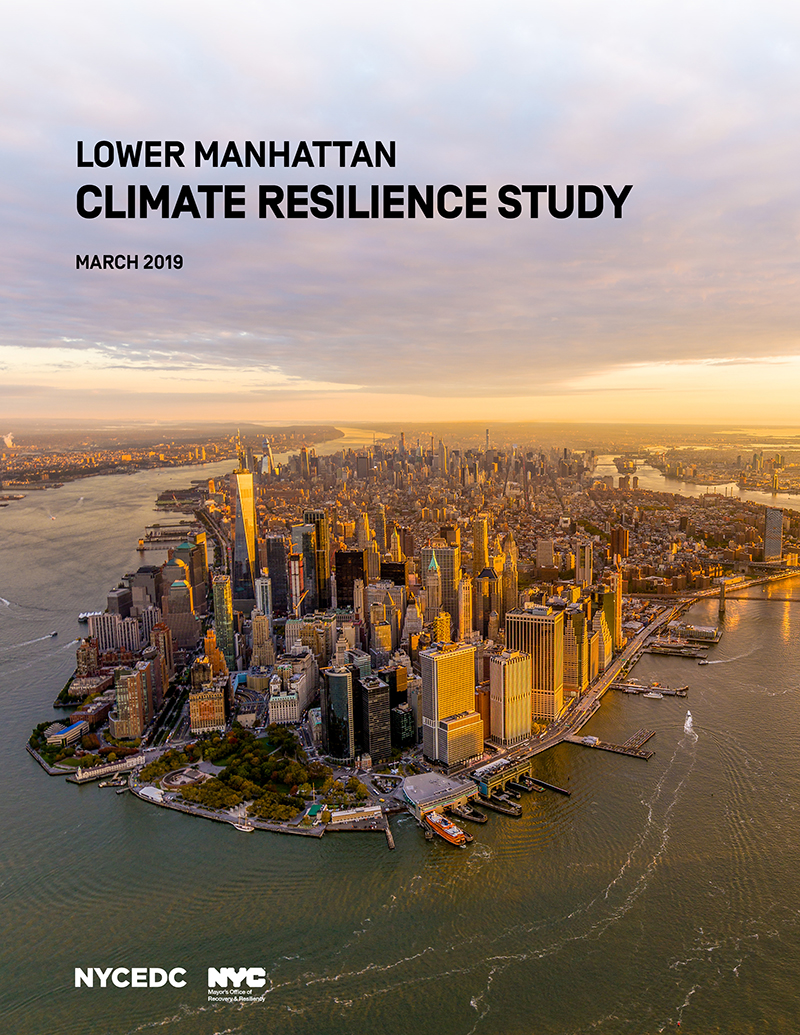
 Lower Manhattan Coastal Resiliency311
Lower Manhattan Coastal Resiliency311 Search all NYC.gov websites
Search all NYC.gov websites
Lower Manhattan Climate Resilience Study
Lower Manhattan Climate Resilience Study
What is the Lower Manhattan Climate Resilience Study?
The Lower Manhattan Climate Resilience Study builds on past efforts and leadership by the Lower Manhattan communities and the City after Hurricane Sandy, and lays the path forward for the next phase of climate resilience planning towards Lower Manhattan's future. The study, which was funded by both the City and State through federal post-Sandy disaster appropriations, and led by the Mayor's Office of Recovery and Resiliency (ORR) and the New York City Economic Development Corporation (NYCEDC) evaluated dozens of adaptation measures and identified a set of strategies to build resilience in Lower Manhattan.
The study assessed a broad range of climate hazards, including:

The study found that by 2050, 37 percent of properties in Lower Manhattan will be at risk from storm surge. By 2100, with over 6 feet of projected sea level rise, almost 50 percent of properties will be at risk from storm surge, and 20 percent of Lower Manhattan's streets will be exposed to daily tidal inundation. Groundwater table rise is projected to put 7 percent of buildings at risk of destabilization and expose 39 percent of streets with underground utilities to corrosion and water infiltration.

In response to these risks, the City has identified approximately $500 million worth of investments in climate resilience and developed an overall strategy that includes both capital projects and additional planning for increasing the resilience of Lower Manhattan.



